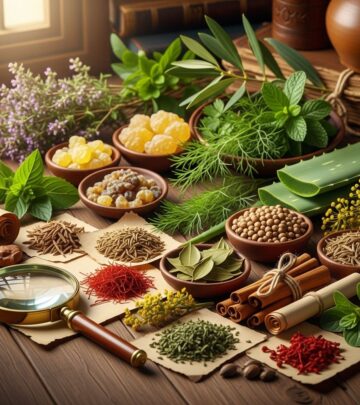Kwanzaa: Honoring African Heritage, Principles, and Community
Daily rituals and symbolic acts foster community, creativity, and heritage connection.

Kwanzaa is a vibrant cultural holiday celebrated each year from December 26 to January 1. Rooted in African traditions and values, Kwanzaa offers a meaningful occasion for families and communities to reflect on heritage, unity, and purpose. This comprehensive guide explores Kwanzaa’s origins, its core principles, symbolic elements, and ways to celebrate, providing readers with valuable insights into one of the most culturally significant observances in the African diaspora.
What is Kwanzaa?
Kwanzaa is a week-long celebration honoring African heritage, history, and unity within the African American community. The name ‘Kwanzaa’ is derived from the Swahili phrase matunda ya kwanza, which means “first fruits.” Inspired by traditional African first harvest festivals, Kwanzaa incorporates music, dance, art, storytelling, and communal meals into its observances, creating a unique space for reflection, joy, and reconnecting with cultural roots.
- Dates: Annually observed from December 26 through January 1
- Scope: Primarily celebrated by African Americans and the African diaspora, open to all who wish to honor the values of community, unity, and African heritage
- Nature: Cultural—not religious—allowing participation across all faiths
Origins and History of Kwanzaa
Kwanzaa was created in 1966 by Dr. Maulana Karenga, a professor of Africana Studies at California State University, Long Beach. In the aftermath of the Watts riots in Los Angeles, Dr. Karenga saw a need for African Americans to reconnect with their cultural roots, fostering a sense of unity and pride. Drawing inspiration from the harvest festivals of West and Southeast Africa—such as the Zulu festival Umkhosi Wokweshwama—Karenga developed a holiday centered on community building and social values.
The extra ‘a’ at the end of Kwanzaa was added to represent the seven core principles of the celebration. Over time, Kwanzaa has grown beyond the United States, embraced by members of the Black diaspora in Canada, the Caribbean, and worldwide.
The Five Pillars of First Fruit Festivals
- Ingathering: Gathering together of people
- Reverence: Honoring ancestors and history
- Commemoration: Remembering the past
- Recommitment: Devotion to shared values
- Celebration: Expressing joy and gratitude
The Seven Principles: Nguzo Saba
At the heart of Kwanzaa are the Nguzo Saba, or Seven Principles. These core values are observed on each day of the festival, guiding both personal growth and communal well-being.
| Day | Principle (Swahili) | Translation | Meaning |
|---|---|---|---|
| 1 | Umoja | Unity | To strive for and maintain unity in the family, community, nation, and race. |
| 2 | Kujichagulia | Self-Determination | To define ourselves, name ourselves, create for ourselves, and speak for ourselves. |
| 3 | Ujima | Collective Work and Responsibility | To build and maintain our community together and make our brothers’ and sisters’ problems our problems, and to solve them together. |
| 4 | Ujamaa | Cooperative Economics | To build and maintain our own stores, shops, and other businesses and to profit from them together. |
| 5 | Nia | Purpose | To make our collective vocation the building and developing of our community, in order to restore our people to their traditional greatness. |
| 6 | Kuumba | Creativity | To do as much as we can, in the way we can, in order to leave our community more beautiful and beneficial than we inherited it. |
| 7 | Imani | Faith | To believe with all our hearts in our people, our parents, our teachers, our leaders, and the righteousness and victory of our struggle. |
The Seven Symbols of Kwanzaa
The celebration of Kwanzaa involves seven essential symbols, each rich in meaning and tradition. Homes are decorated with these items to embody the festival’s values and provide a focus for reflection during the holiday.
- Mkeka (Mat): Represents the historical and traditional foundation upon which communities are built. The symbols are placed on the mkeka.
- Mazao (Crops): Symbolize the African harvest and collective labor, suggesting rewards from working together.
- Muhindi (Ears of Corn): Each ear represents a child in the family, highlighting the importance of children to the community’s future. Families place as many ears on the mkeka as they have children.
- Kikombe cha Umoja (Unity Cup): Used for pouring libations and shared among participants as a gesture of unity and remembrance of ancestors.
- Zawadi (Gifts): Emphasize commitments made and kept, particularly regarding educational achievement and integrity.
- Kinara (Candleholder): Holds the seven candles and serves as a centerpiece, symbolizing ancestor roots and the line of descent.
- Mishumaa Saba (Seven Candles): Each candle symbolizes one of the seven principles. The arrangement (three red, three green, one black) reflects African liberation colors and their corresponding values.
Candle Colors and Their Meaning
- Black Candle (center): Represents the people or unity; lit on the first day.
- Red Candles (left): Symbolize the struggles and sacrifices; lit next in succession.
- Green Candles (right): Stand for hope, future, and growth; represent aspirations and success from collective effort.
How Is Kwanzaa Celebrated?
Kwanzaa celebrations are highly adaptable, with each household embracing its own unique traditions. However, certain customs span most observances and unify the spirit of the holiday across communities.
Daily Rituals and Family Gatherings
- Each evening, families gather to light the appropriate candle(s) in the kinara.
- A discussion or reflection on that day’s principle is held, often led by an elder or a different family member each night.
- Libations are poured in remembrance of ancestors, sometimes accompanied by music or storytelling.
- Traditional African, Caribbean, or Southern dishes are prepared and shared.
Community Activities and Cultural Expressions
- Public celebrations may include dance performances, drumming, poetry readings, and art exhibits.
- Workshops or educational events explore Black history, achievements, and African heritage.
- Gift-giving focuses on handmade or educational items, promoting creativity, learning, and integrity.
Significance of Kwanzaa in Today’s World
Kwanzaa serves as a reaffirmation of connection to African traditions and contemporary struggles and triumphs. It creates opportunities for meaningful dialogue about identity, legacy, and hopeful futures for the African diaspora. Whether celebrated in addition to other holidays like Christmas and Hanukkah, or as a stand-alone tradition, Kwanzaa is a powerful way to nurture family unity and community empowerment.
Decorating for Kwanzaa
- Homes are adorned with African art, woven baskets, colorful fabrics, and candles.
- Symbols and the colors red, black, and green are emphasized throughout décor.
- Families may display photographs, books, and memorabilia that celebrate Black history and culture.
A Kwanzaa Feast: Karamu
The highlight of Kwanzaa is the Karamu, a communal feast held on December 31. Friends, family, and neighbors gather to share food, music, and stories. The meal may feature dishes from across Africa and the African diaspora, such as jollof rice, jambalaya, black-eyed peas, fried plantains, and collard greens. The Karamu feast symbolizes solidarity, gratitude, and renewed commitment to shared principles.
Frequently Asked Questions (FAQs)
What does the word ‘Kwanzaa’ mean?
Kwanzaa comes from the Swahili phrase “matunda ya kwanza,” meaning “first fruits.” The name honors African harvest festivals that inspired the celebration.
Is Kwanzaa a religious holiday?
No. Kwanzaa is a cultural, not religious, holiday. People of all faiths can celebrate it because it focuses on cultural values rather than religious doctrine.
Can Kwanzaa be observed alongside other holidays?
Absolutely. Many African American families celebrate Kwanzaa in addition to Christmas, Hanukkah, or other faith-based holidays. The inclusive, cultural focus of Kwanzaa allows for flexible observance.
What are appropriate gifts for Kwanzaa?
Gifts (Zawadi) given during Kwanzaa are intended to promote growth, learning, and achievement. Common gifts include books, educational materials, artwork, or handmade crafts.
Who celebrates Kwanzaa?
Kwanzaa is rooted in the African American community but is celebrated by individuals and families of African descent globally—including Afro-Caribbean, Afro-Latinx, and others. Anyone who embraces the principles is welcome to join the observance.
How is the kinara used during Kwanzaa?
The kinara is a seven-candle holder used as the centerpiece of Kwanzaa. Each night, one additional candle is lit to honor the corresponding principle, starting with the black (unity) candle on the first night.
Ways to Enrich Your Kwanzaa Celebration
- Engage in meaningful conversations about ancestry, history, and current issues affecting the Black community.
- Encourage children and teens to learn a few words in Swahili or to research influential Black leaders.
- Support Black-owned businesses and artisans when purchasing gifts or supplies.
- Attend (or organize) virtual or community events focused on culture and unity.
Resources for Learning More About Kwanzaa
- Official Kwanzaa Website: Offers information, event listings, and educational materials.
- National Museum of African American History and Culture: Features exhibits and learning modules on Kwanzaa and African American traditions.
- African American Cultural Centers: Host seminars, storytelling sessions, and cultural celebrations.
Kwanzaa Word Glossary
| Term | Meaning |
|---|---|
| Kwanzaa | From Swahili “first fruits” (harvest) |
| Nguzo Saba | The Seven Principles |
| Kinara | Seven-candle holder |
| Mishumaa Saba | The Seven Candles |
| Mazao | Crops |
| Muhindi | Ears of corn |
| Mkeka | Mat (foundation) |
| Kikombe cha Umoja | Unity cup |
| Zawadi | Gifts |
Kwanzaa is a dynamic, affirming celebration that brings people together in community, pride, and remembrance. Through its guiding principles and lively traditions, the holiday continues to inspire and uplift generations.
References
Read full bio of Sneha Tete











